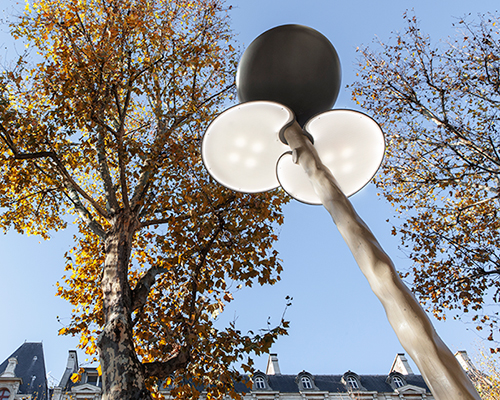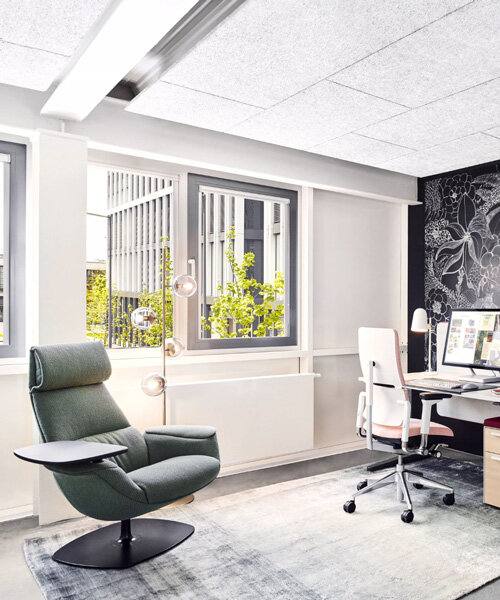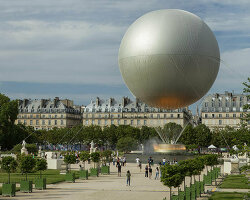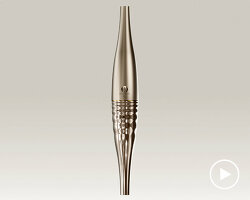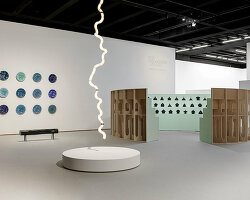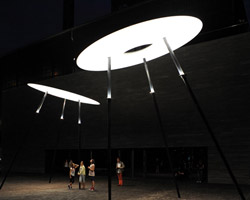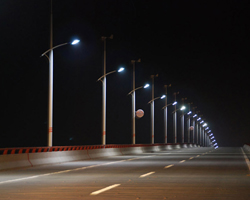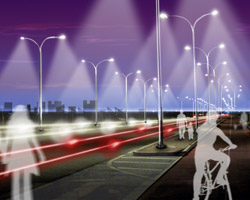mathieu lehanneur’s street lights in paris express balance between nature and technology
all images courtesy of mathieu lehanneur
french industrial designer mathieu lehanneur creates ‘clover’ – an urban lighting furniture collection, for relaxing and recharging. the design mixes energy, functions and materials by combining lamps and seating, with wood and solar panels. installed in paris during COP21 – the united nations conference on climate change 2015, each is carved from a wooden mast. the street lamp and bench have the appearance of being cut and polished by hands of a craftsman but lehanneur in fact, digitally machined them using an industrial process that employed many different wood species from nearby regions.
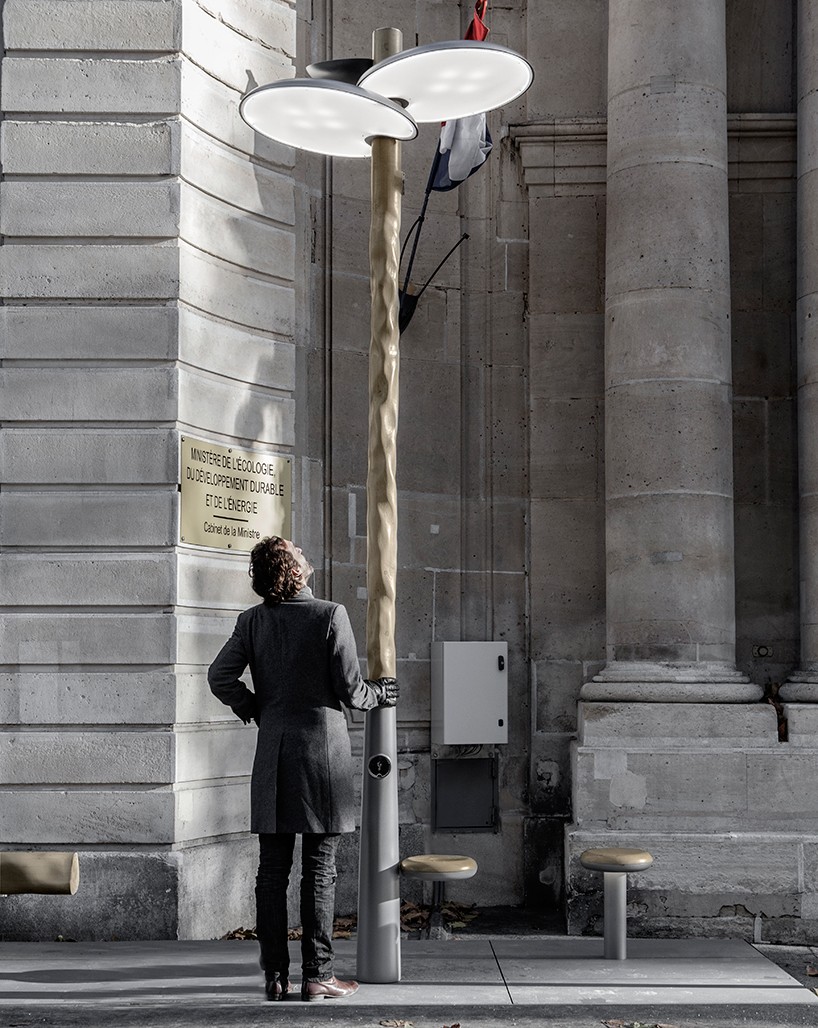
at the top the of ‘clovers’ are fixed aluminum domes that distribute luminosity directly downwards from the LEDs to keep light pollution to a minimum and maximize energy efficiency. the dome facing upwards houses the solar panels that power the street lamps for three hours. a small hatch at street level allows pedestrians to charge their smartphones. the lighting collection is adaptable for an assortment of different areas and configurations – the bench can stretch over 15 meters long. with ‘clover’, mathieu lehanneur shows that design has the ability to combine nature and technology to forge harmony in an urban landscape.
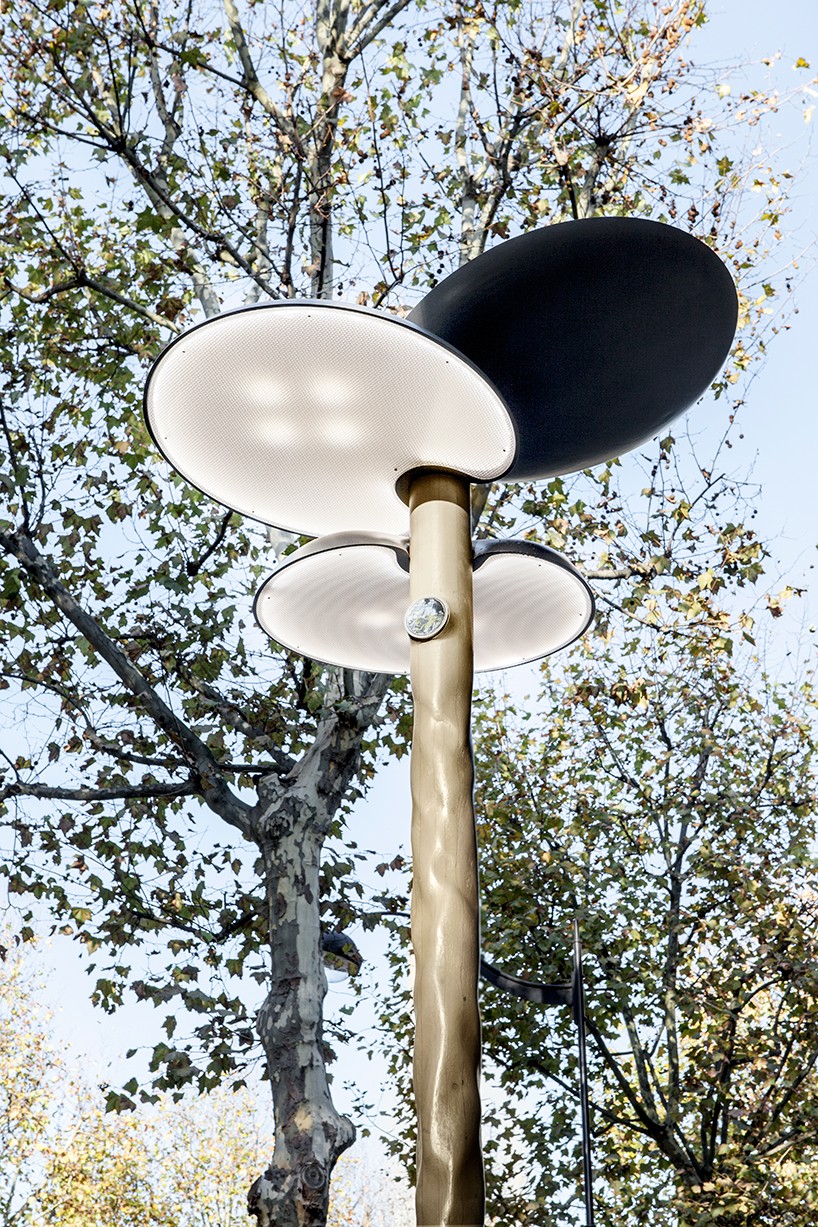
two panels filled with LEDs directly shine downwards
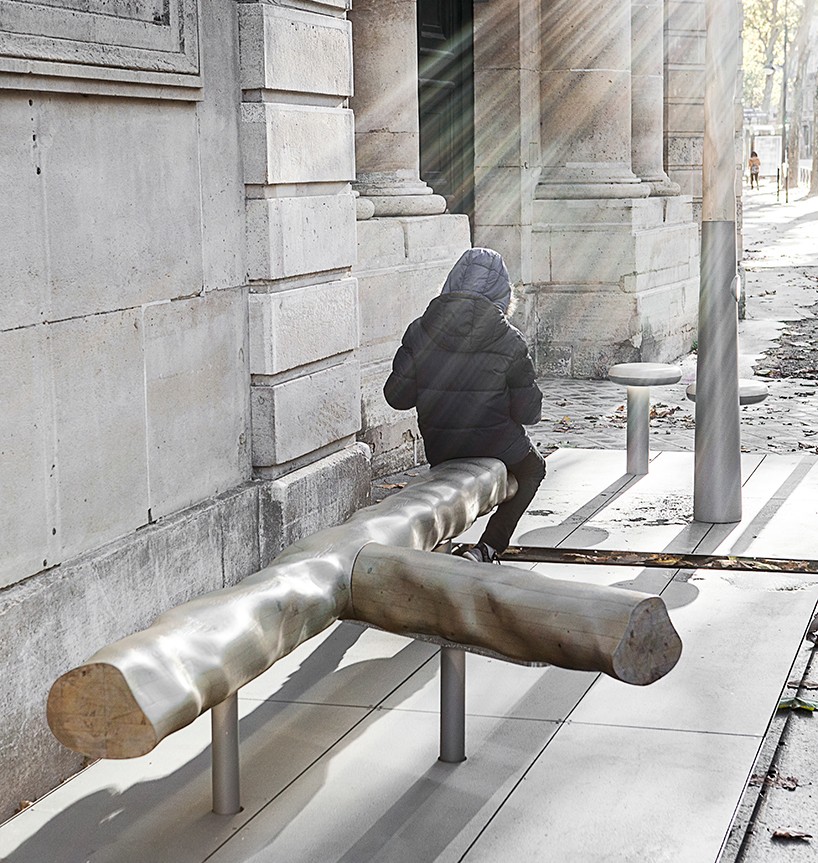
the accompanied wooden bench
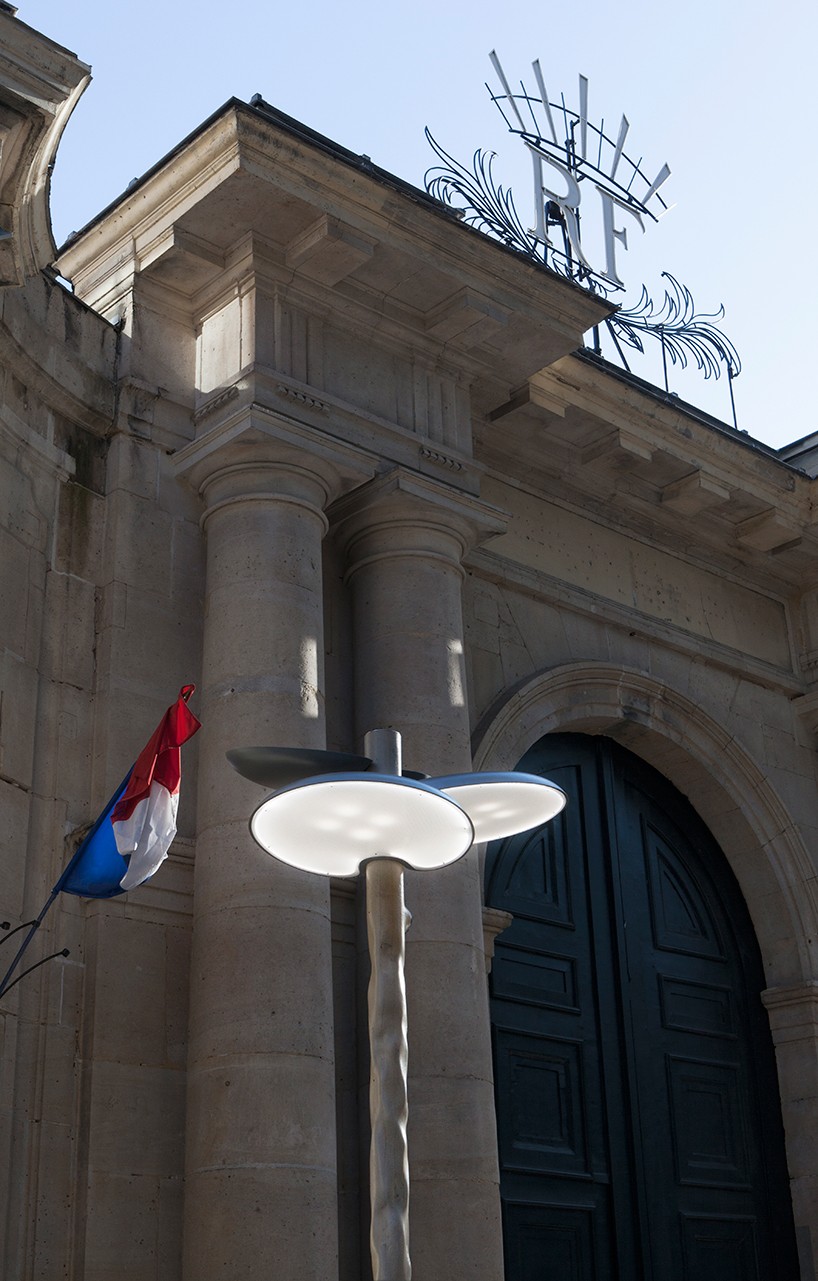 the third panel facing towards the sky houses the solar panel
the third panel facing towards the sky houses the solar panel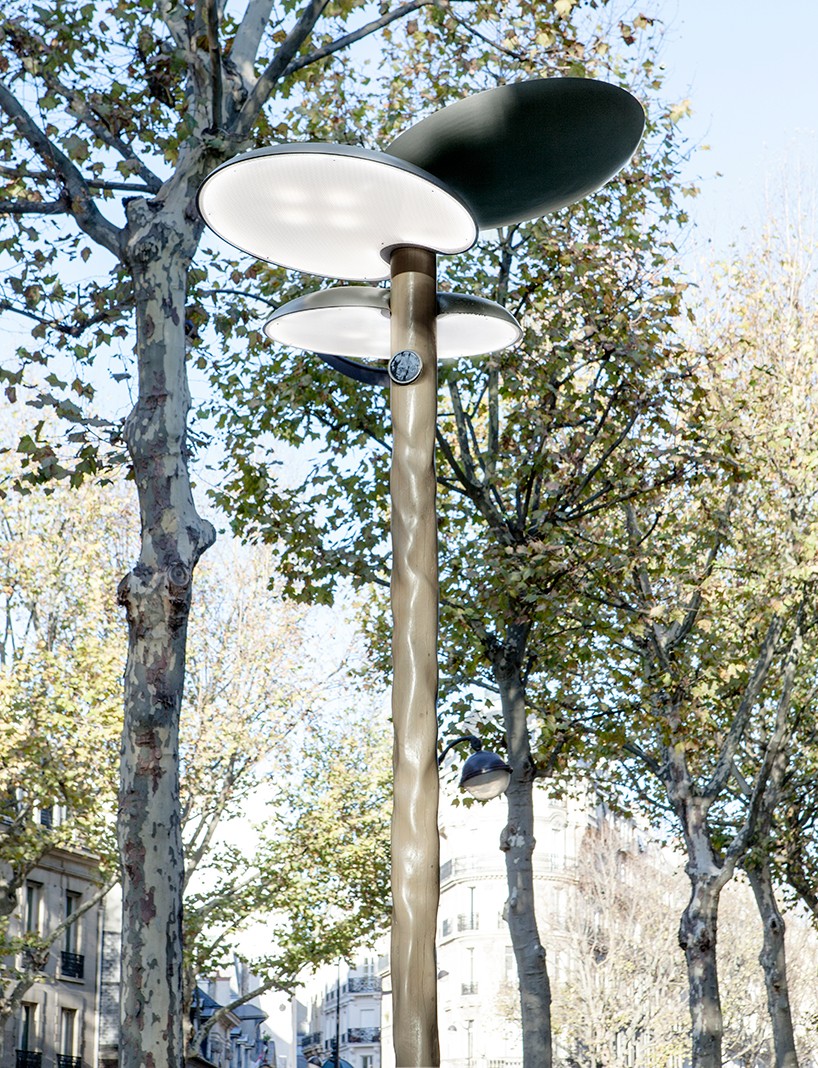 the solar panel can power the ‘clover’ for three hours
the solar panel can power the ‘clover’ for three hours 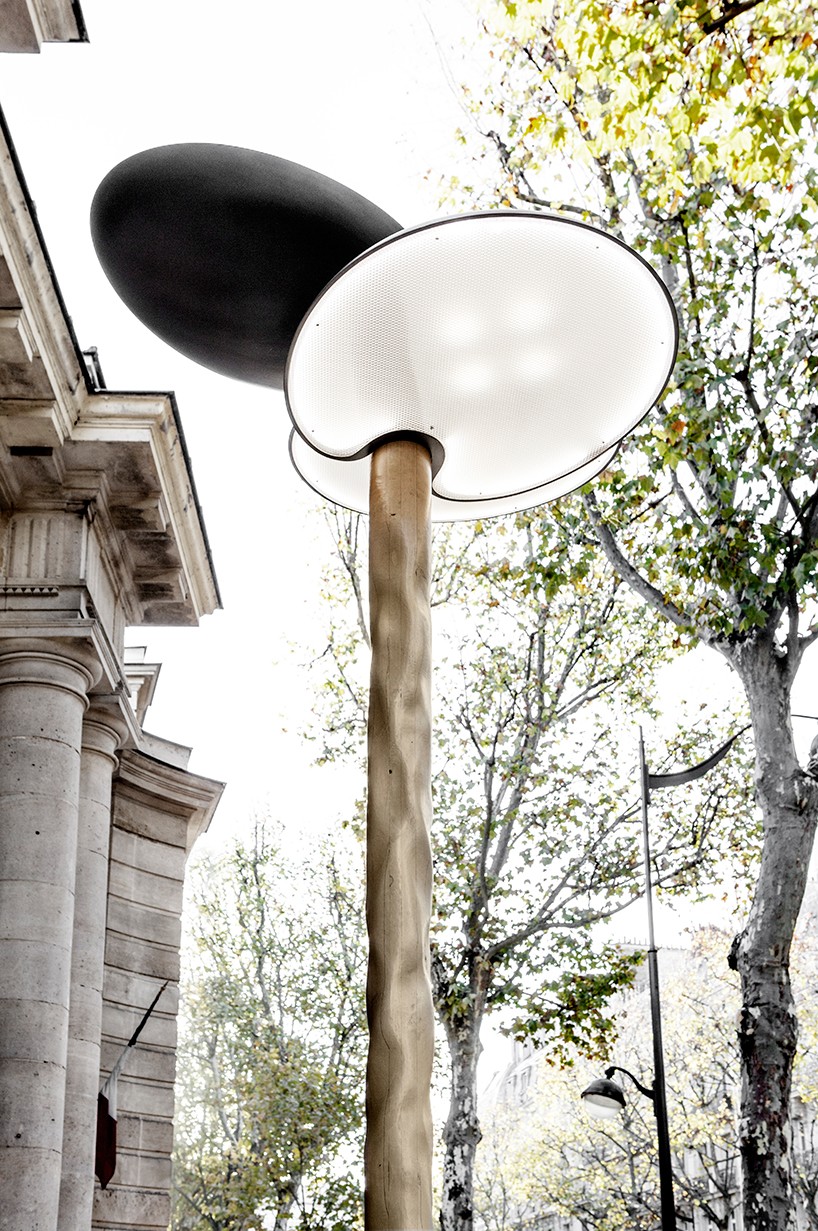 the wooden mast was digitally machined
the wooden mast was digitally machined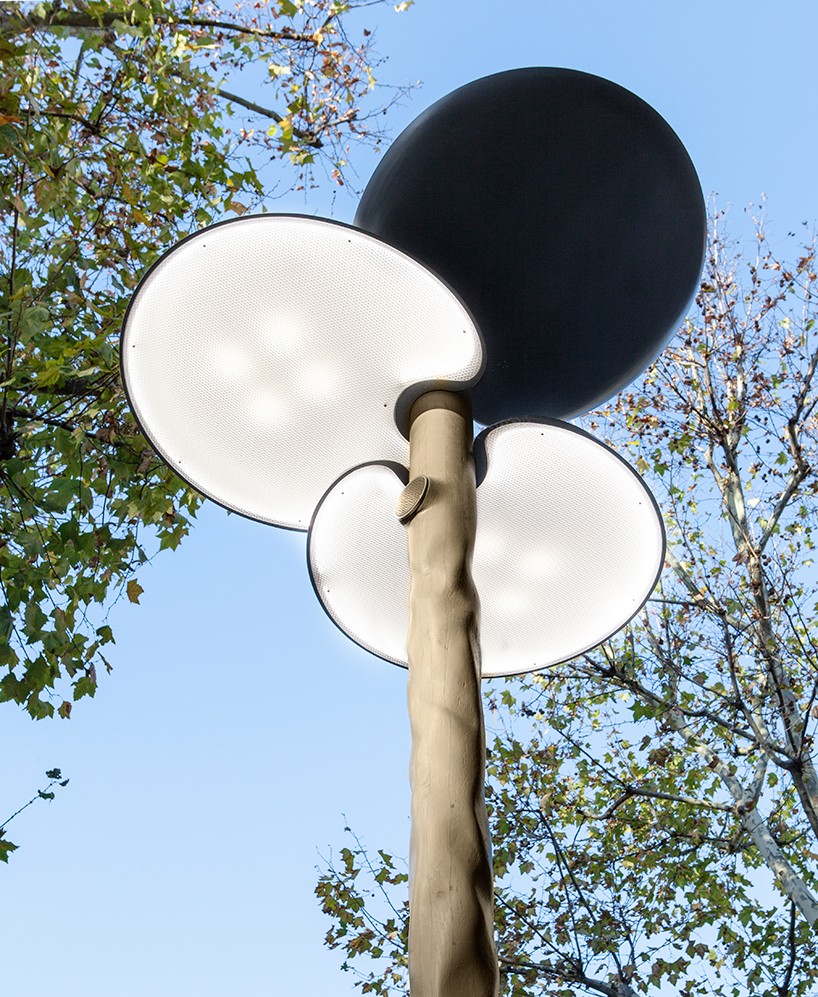 the manufacturing process allowed the use of many different wood species from near by regions
the manufacturing process allowed the use of many different wood species from near by regions
